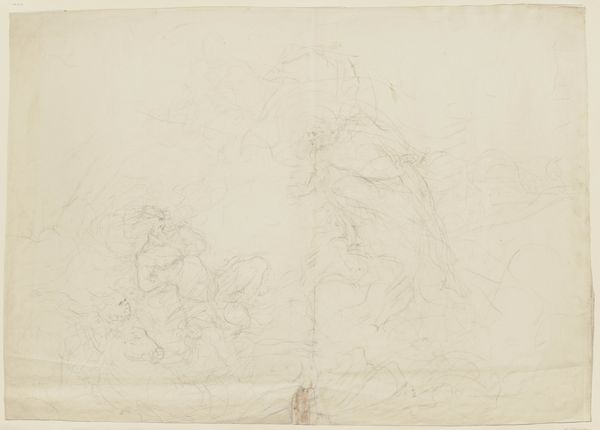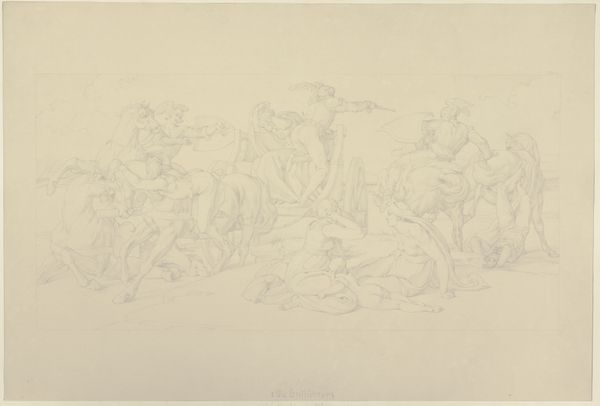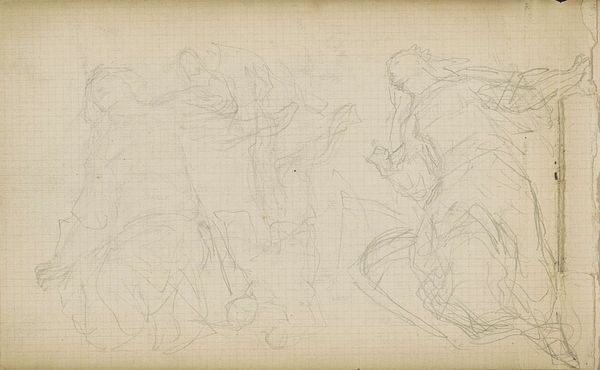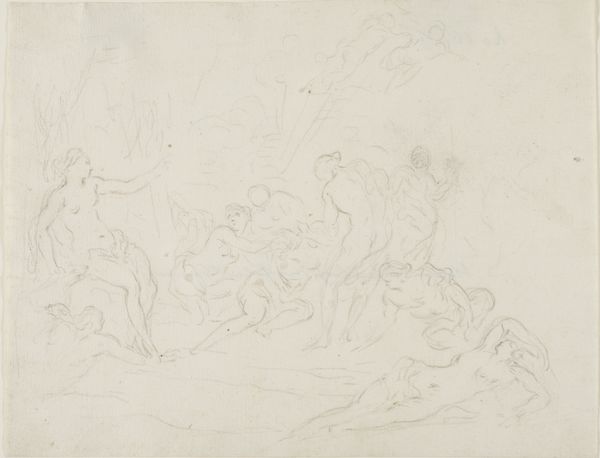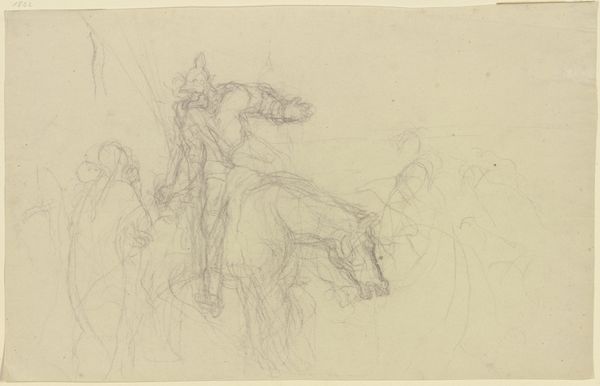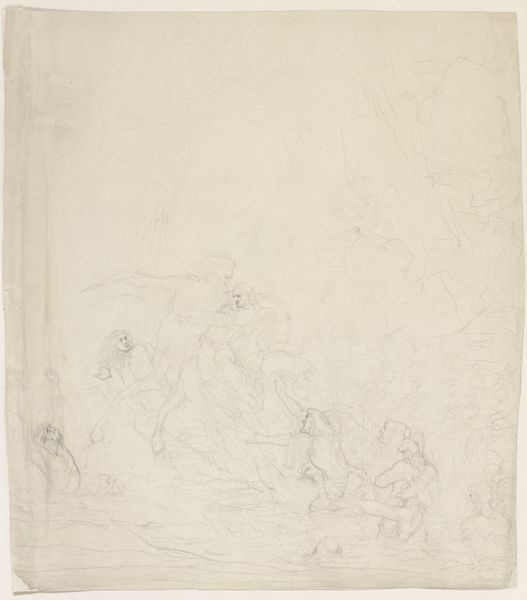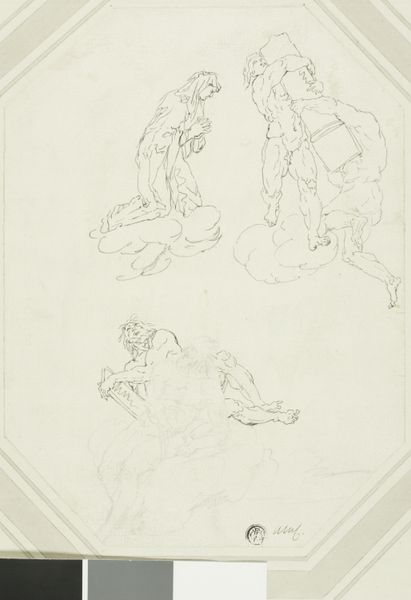
drawing, pencil
#
drawing
#
etching
#
figuration
#
pencil drawing
#
pencil
Dimensions: 200 mm (height) x 310 mm (width) (bladmaal)
Editor: This drawing, "Djaevel og knokkelmaend" or "Devil and Bone Men," by Lorenz Frølich, made between 1846 and 1908, is crafted with pencil. It's quite faint, a ghostly scene... what strikes you about this piece? Curator: Immediately, I'm drawn to the labor embedded in the creation of this drawing. The delicate pencil strokes, repeated and layered, suggest a slow, deliberate process. How does Frølich’s choice of such a fragile medium – pencil on paper – contribute to the themes of mortality and the ephemeral suggested by the subject matter? Editor: That's a fascinating perspective. I hadn't considered the fragility of the medium as a deliberate choice. It emphasizes the transient nature of life and maybe even art itself. Curator: Exactly! And think about the social context. Drawings like these were often preliminary sketches for larger, more 'finished' works – engravings or paintings, perhaps. This challenges our traditional notions of artistic value. Is this 'lesser' status reflective of a perceived lesser value of labor, the artist’s labor itself? How do preliminary sketches speak to production, a crucial step to making art at that time? Editor: So you're suggesting we look at this not just as a finished artwork, but as evidence of the artistic process, a trace of Frølich's hand and thought? Curator: Precisely! And within the art world’s labor hierarchy, how much has the making process and the social position of artists involved really evolved through the decades? How would a contemporary audience react to its subdued visual statement and appreciate Frølich's piece? Editor: That’s a perspective shift. Seeing the sketch as a document of labor and social hierarchy makes me reconsider my initial interpretation. Curator: The materials themselves and the means of production are intrinsically linked to the meaning we derive from art. Considering the physical aspects of art makes you question conventional boundaries! Editor: I'll definitely look at drawings, and other art, in a new light from now on, paying closer attention to materials and processes. Thanks!
Comments
No comments
Be the first to comment and join the conversation on the ultimate creative platform.

